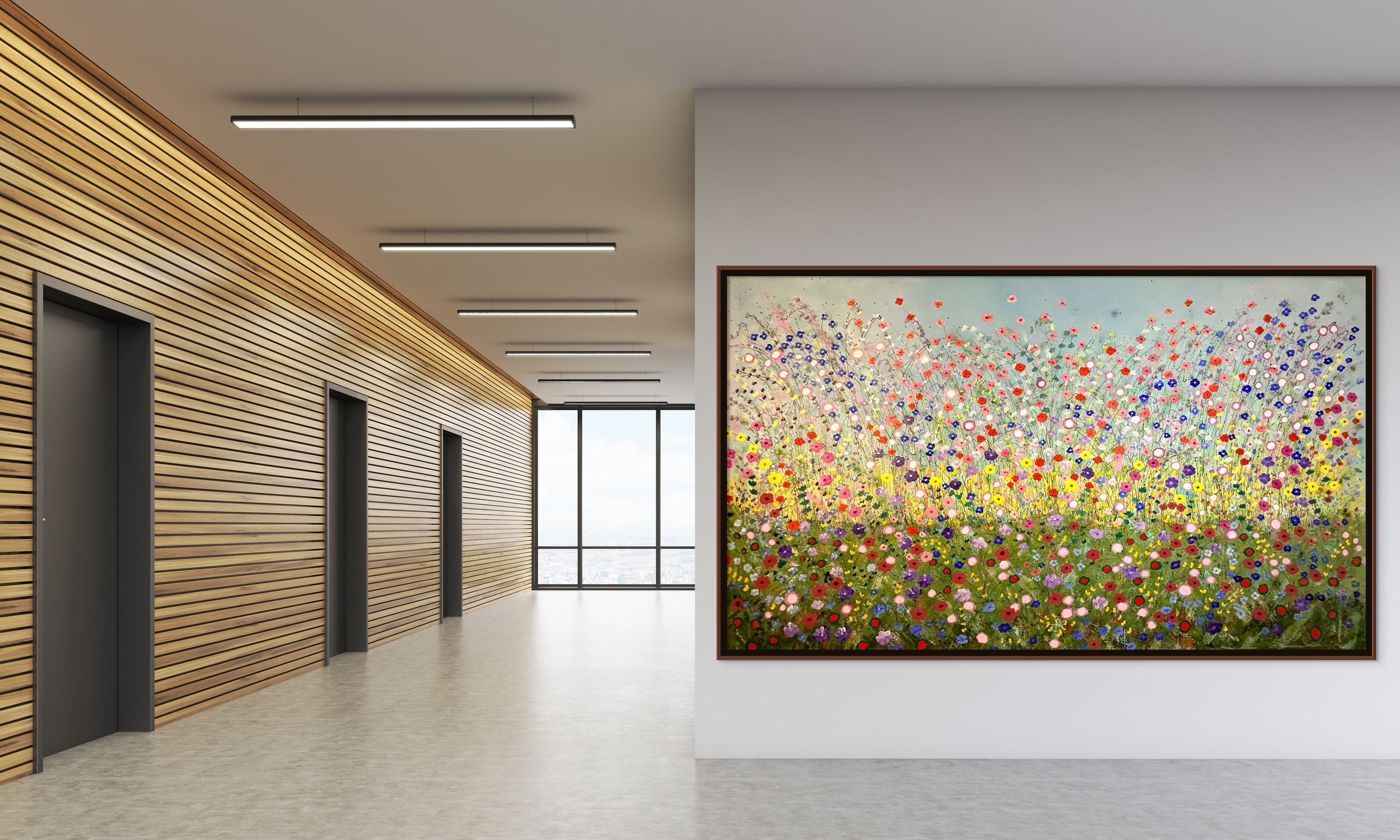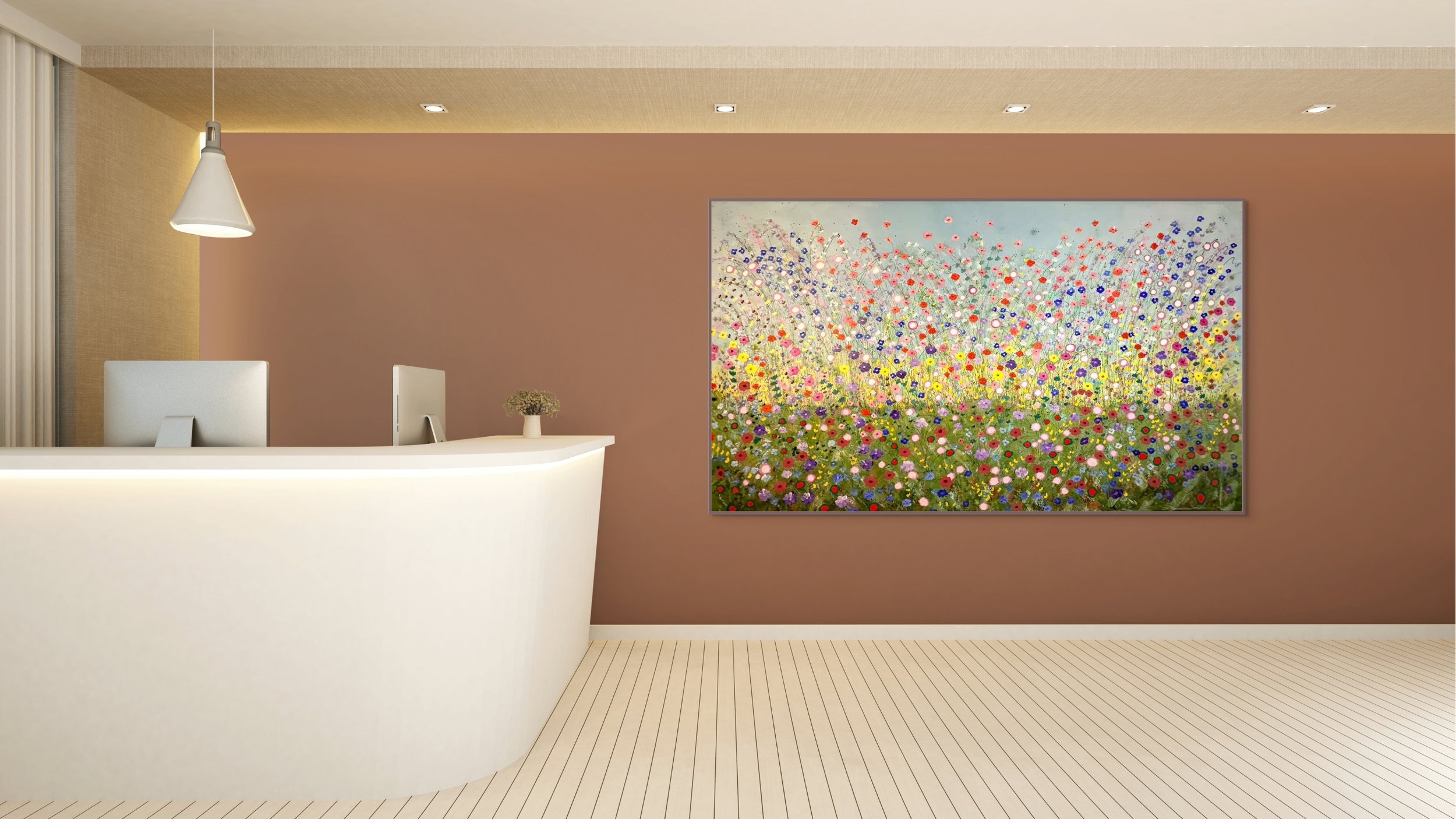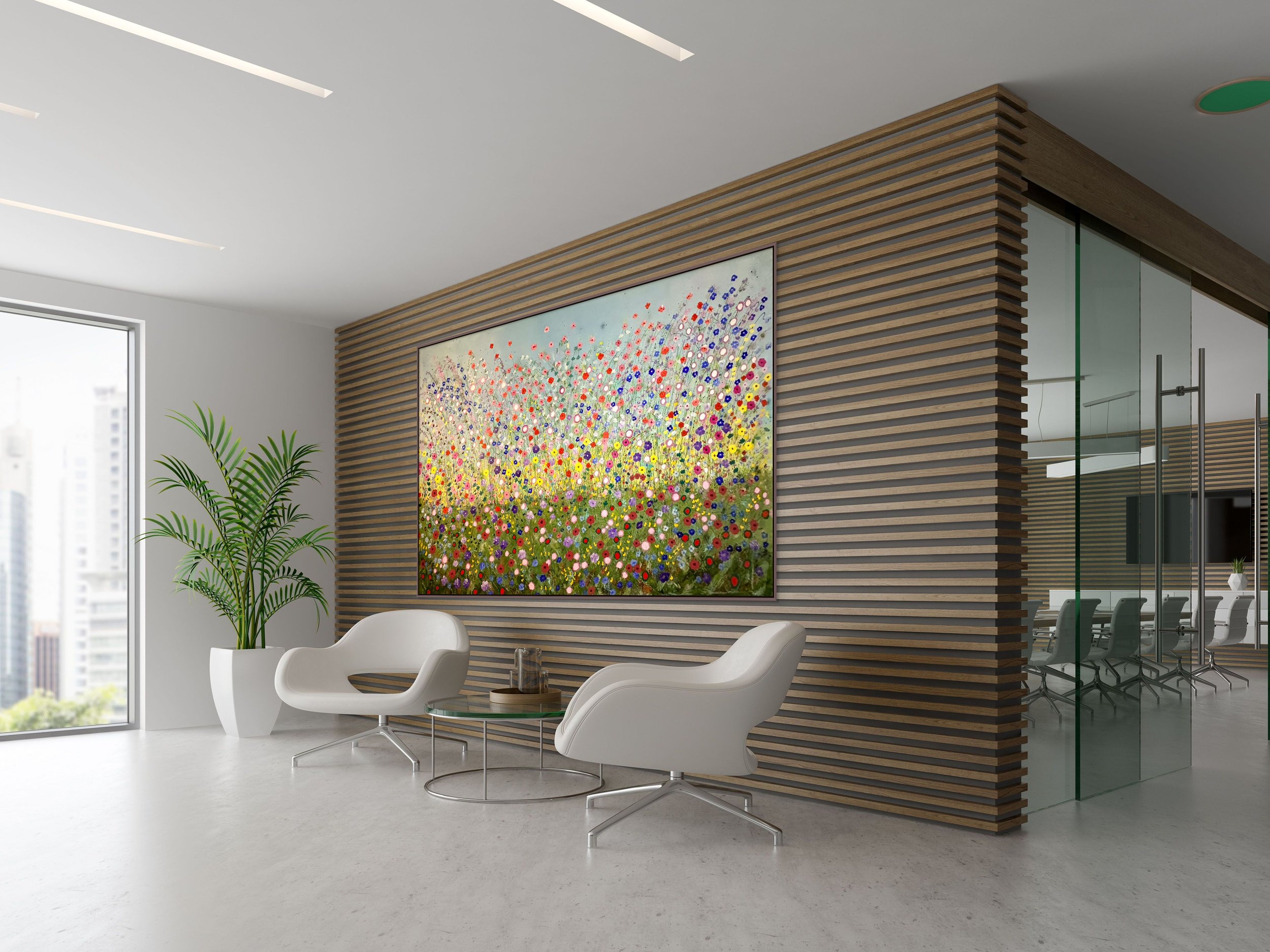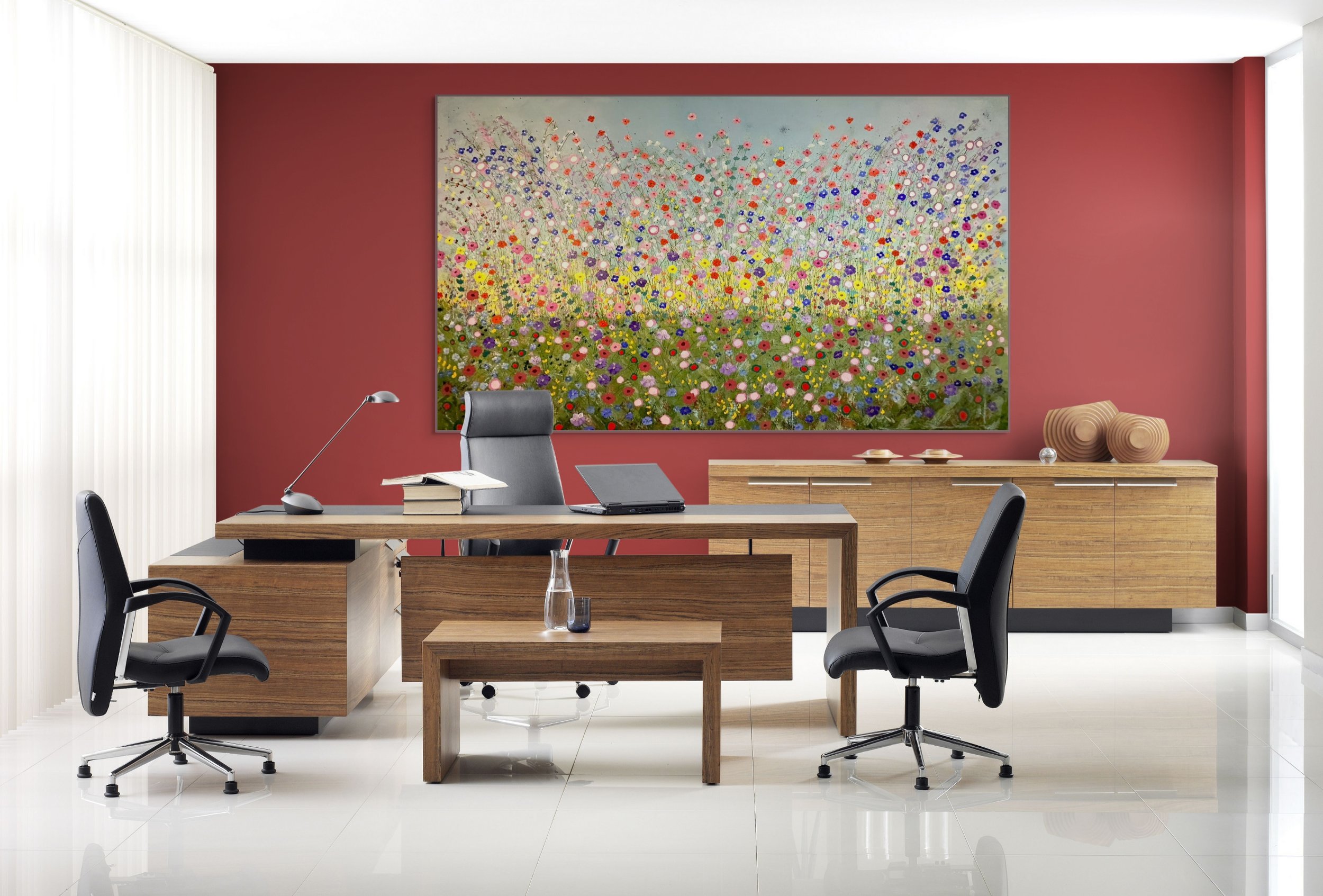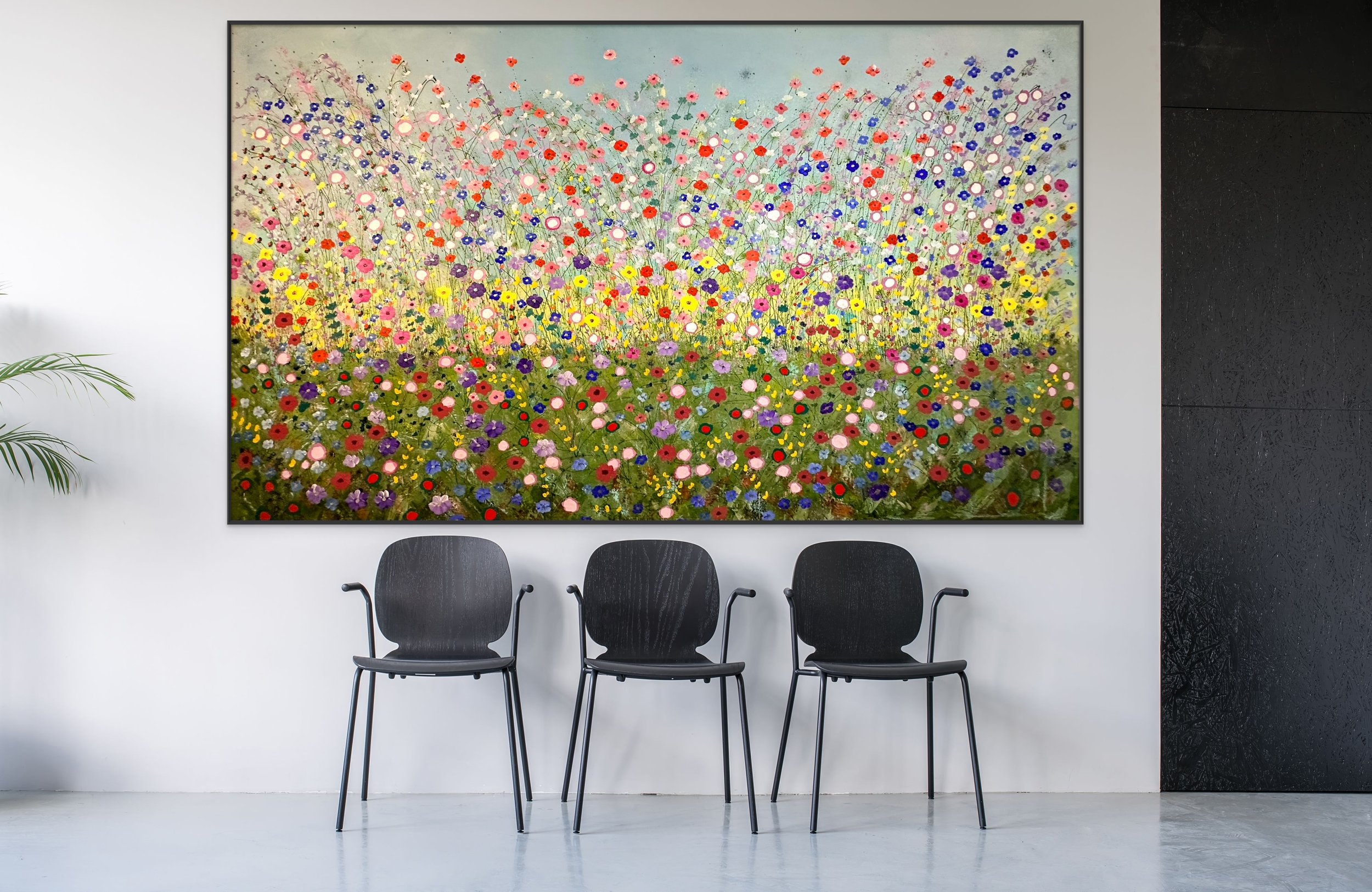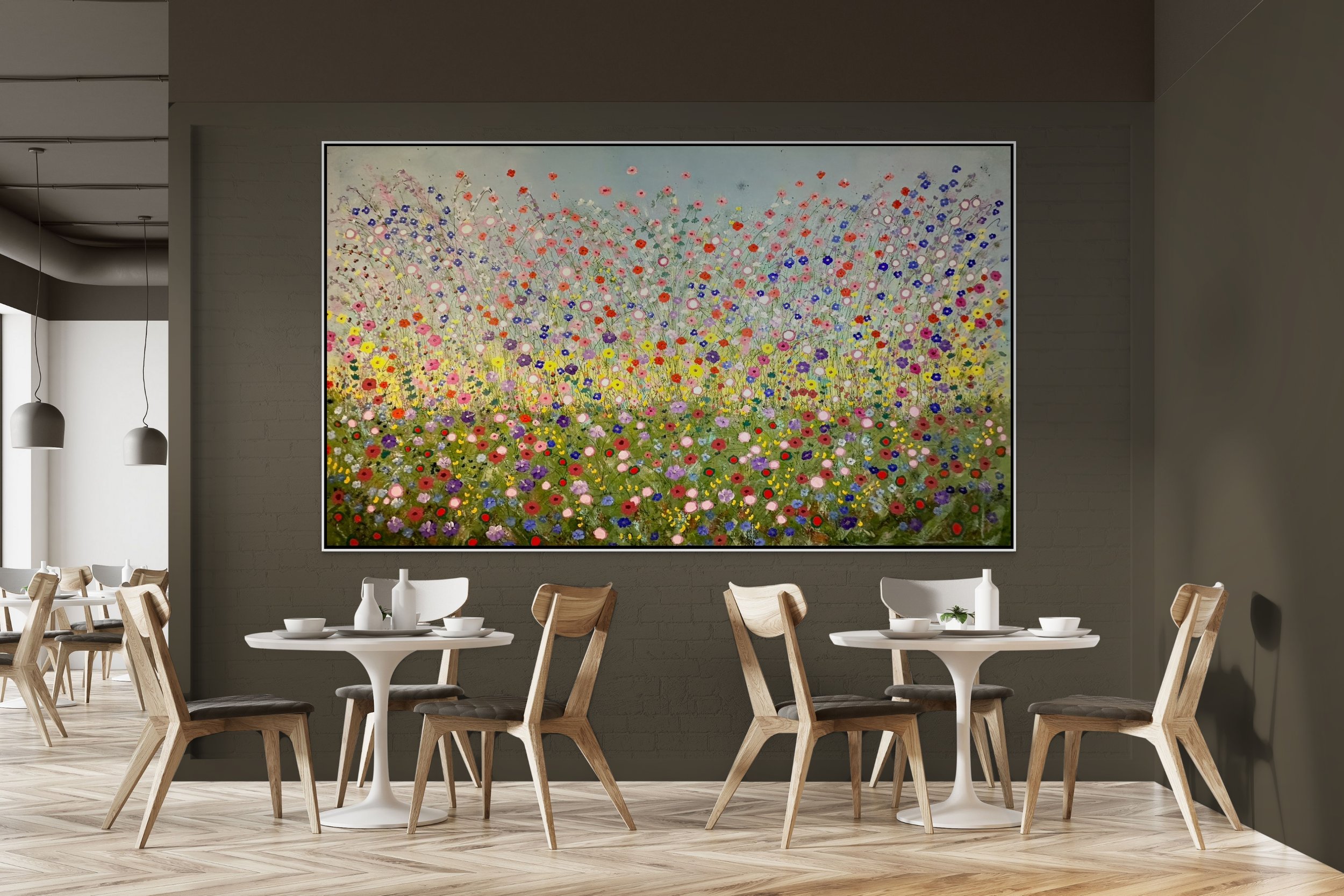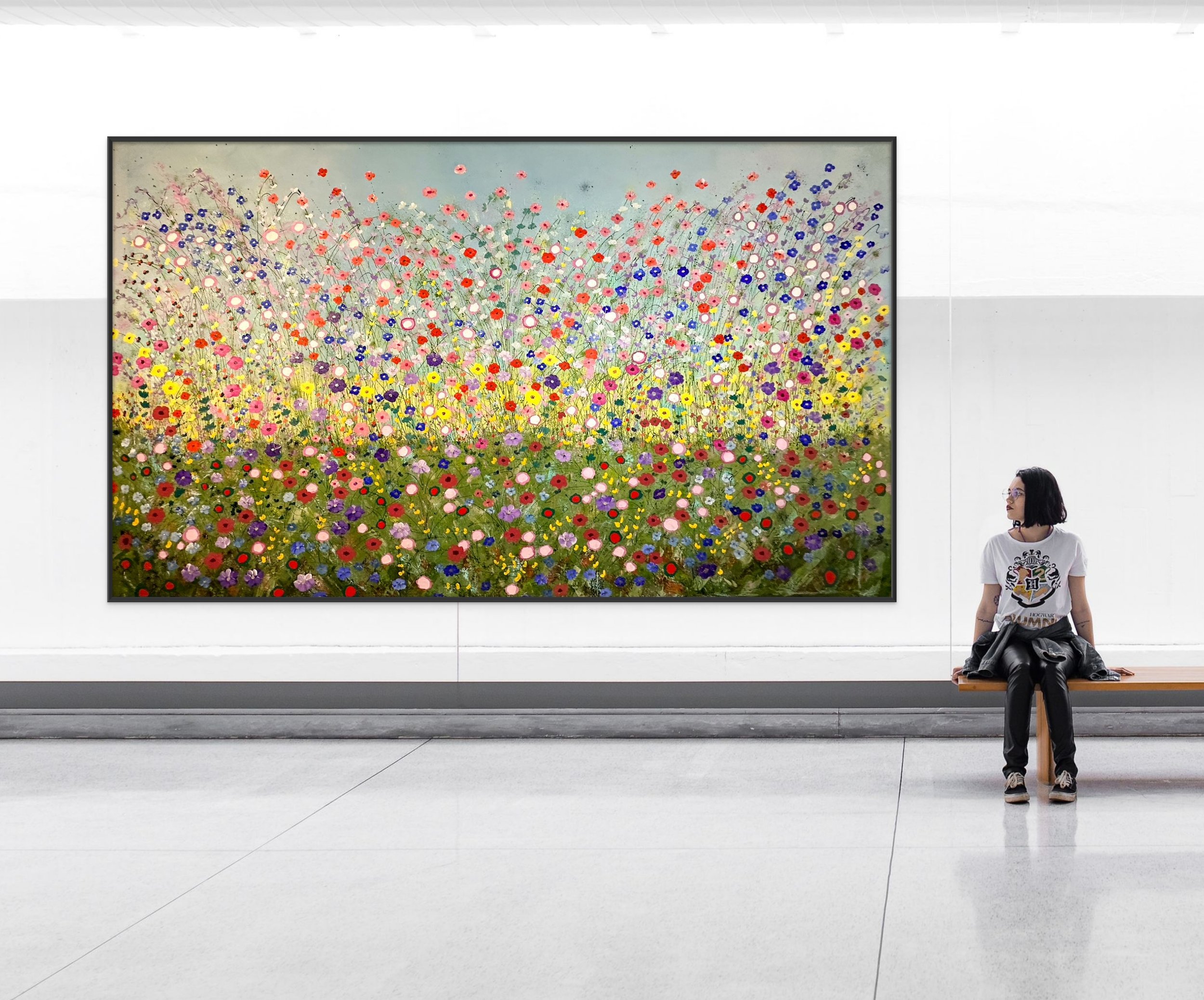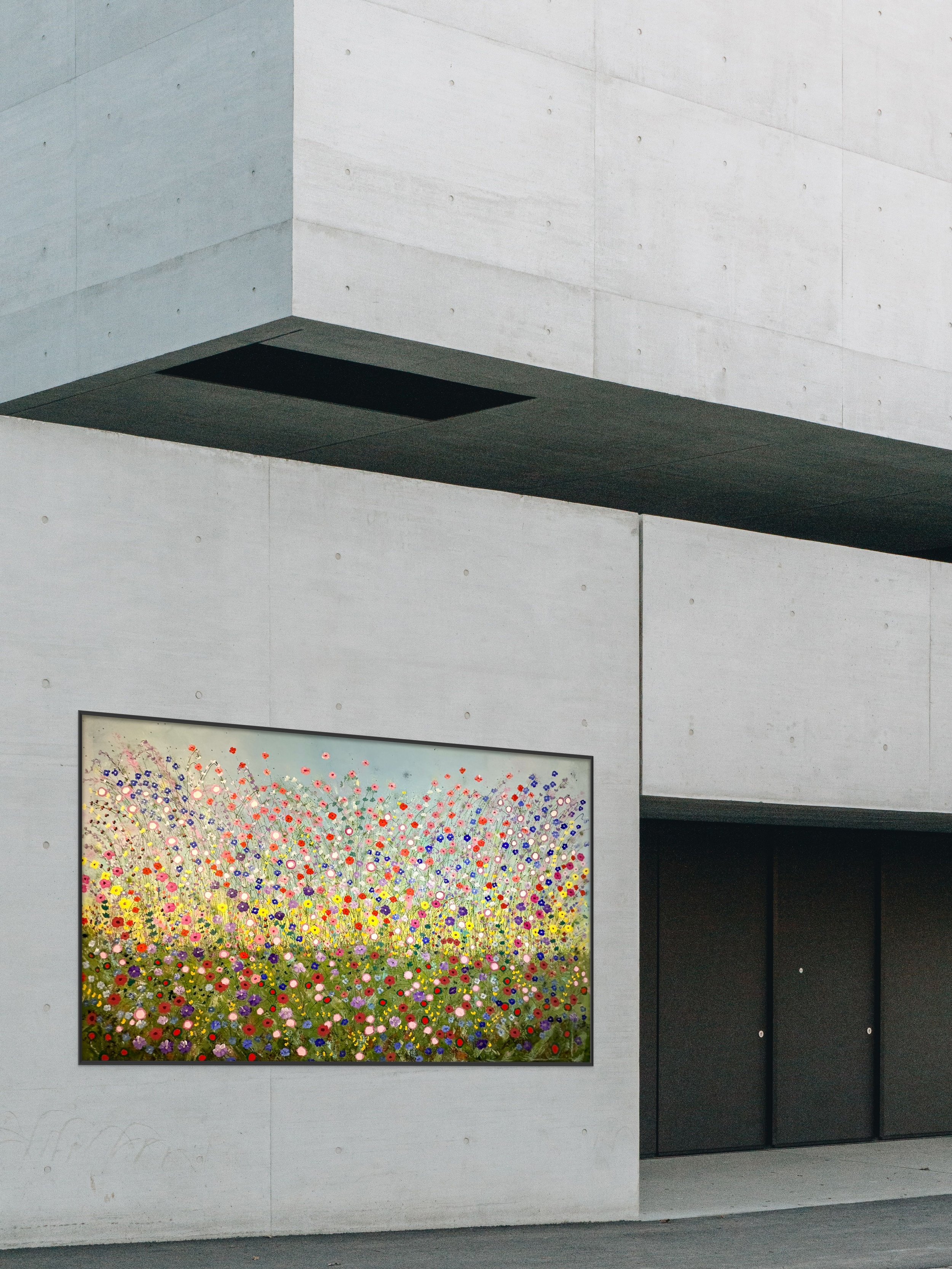Experimenting With Art And Health
I’m an artist and innovator in the field of art and health, so I like to experiment a lot.
Recently ARTPLACER.com, an art placement company I really enjoy, added patient rooms to their excellent selection of mockup photos. Today my happy evidence-based design art hangs in so many different physical settings, but I have always told people I never considered it a good fit for the inside of a hospital patient’s room.
With ARTPLACER’S new mockup photos, here was my chance to really experiment within the inside of patient rooms, so I did.
When I create evidence-based design art, I think back to when I needed two major surgeries in different parts of my body in less than 30 days. Through this experience I realized there were so many different stages involved—such as the in-hospital pre-operation stage, the in-hospital post-operation stage, and the at-home longterm recovery stage. I also realized how my needs were different during each stage.
Right after surgery, while in my patient room, I felt that my entire body had been seriously assaulted and traumatized—and it had. The hospital, the staff, and my two doctors were all excellent, but that’s just what happens when a human body needs major surgical operations.
While inside my patient room, what I needed most was a total relief from any additional stimulation or trauma. Most of my evidence-based art is strategically and deliberately designed to not stress, but it is also designed to stimulate.
The trick—or I should say the skill—as an evidence-based design patient room artist is to create a work of art that is lovely according to the evidence-based design guidelines but is also one that does not cause too much brain stimulation. The art should be lovely without impact.
Placing different pieces of my art in ARTPLACER’S new hospital rooms, I was able to do some experimenting and here are some things I discovered.
Very much to my surprise, some of my florals did very well, even in a darker patient room. They were lovely and uplifting and fit comfortably in this room without creating too much stimulation to the brain.
I was even more surprised to see that even my bolder evidence-based design florals succeeded. They clearly delivered happiness and cheer without causing any stress or trauma.
Here are some of my other evidence-based design paintings that I thought might just work inside a patient room. I have always felt that my ideal hospital patient room should have carefully selected works of real art on the wall. Bland, boring, stereotypical designs actually frighten me. It’s as if this art makes a kind of heart monitor flatline sound. For me, art is hyper visual but it’s also always full of music and sound.
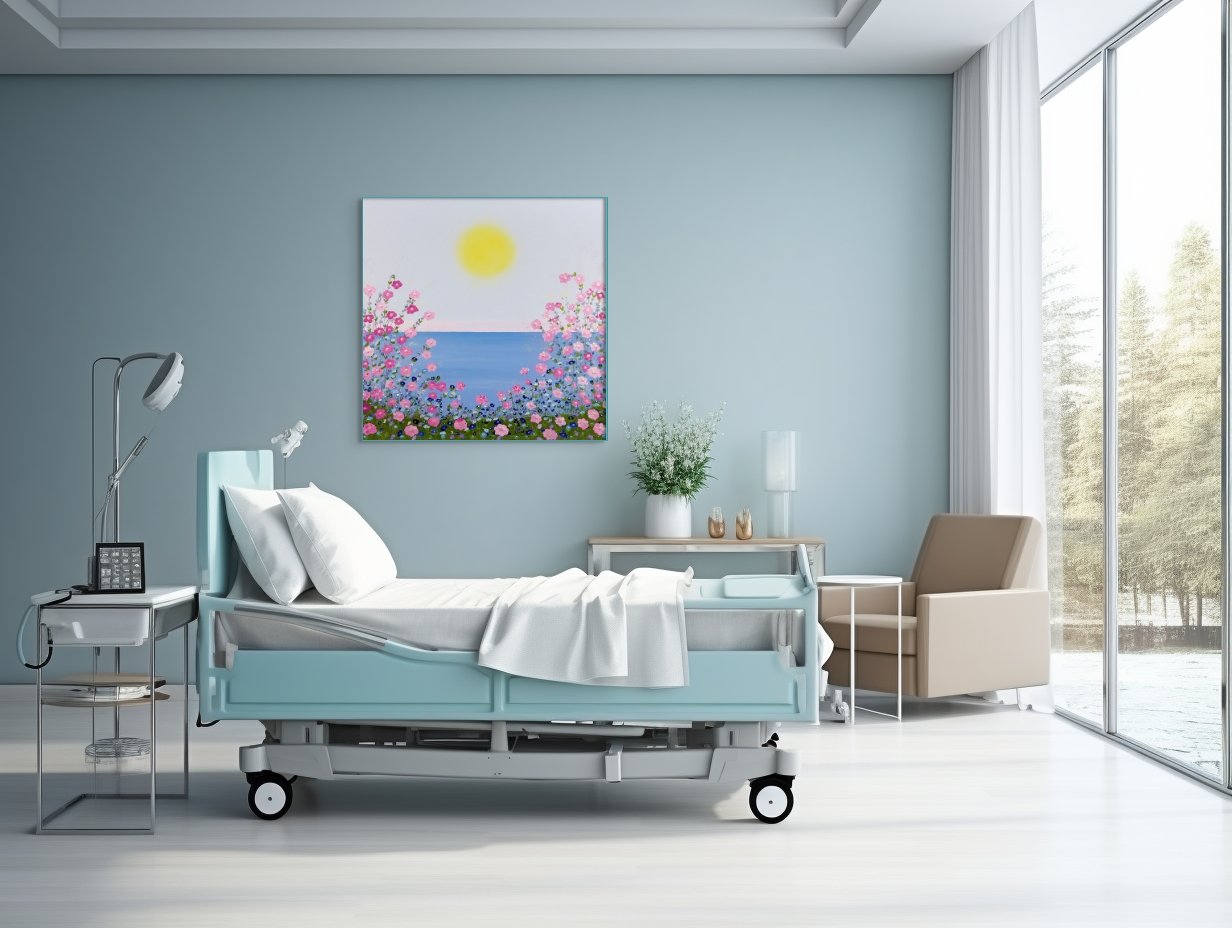
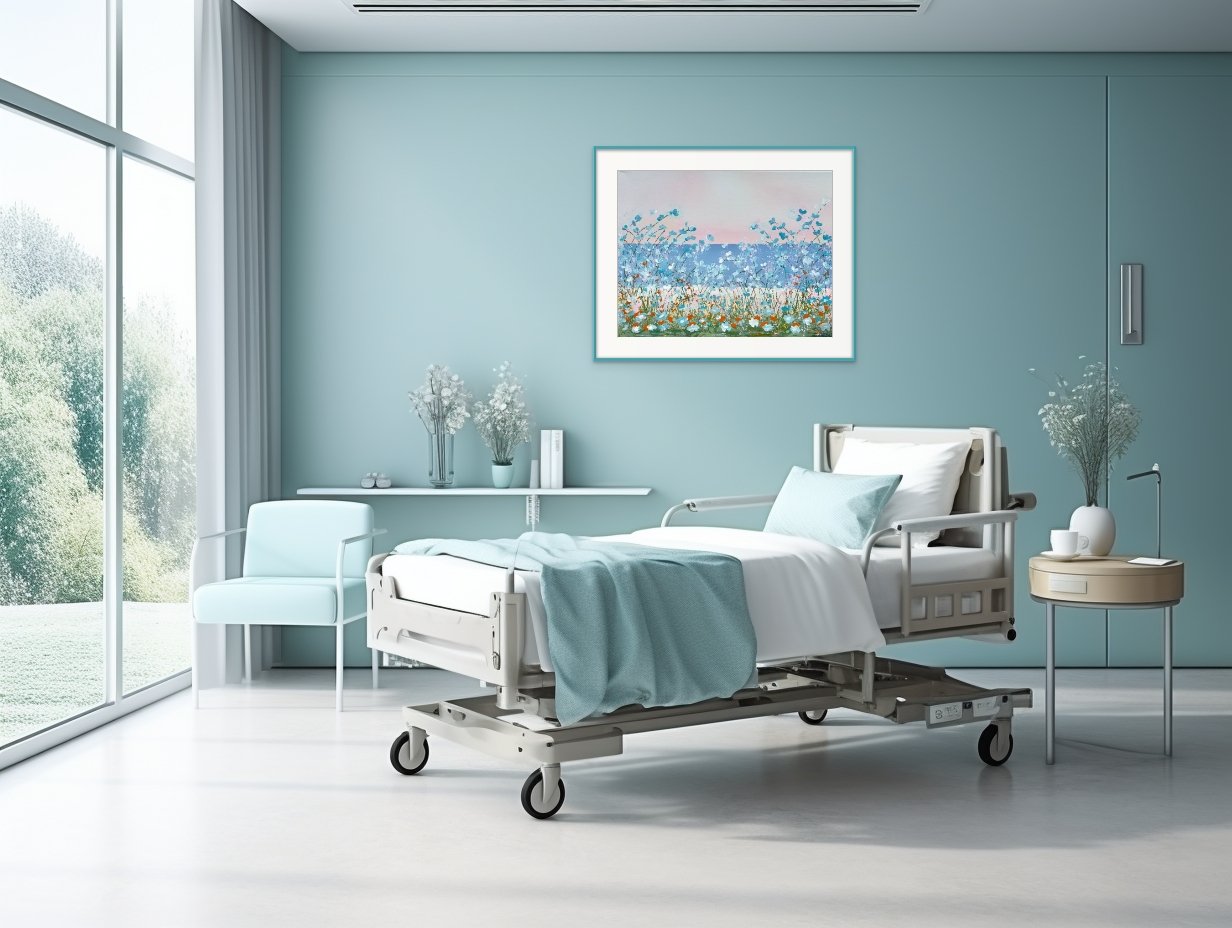
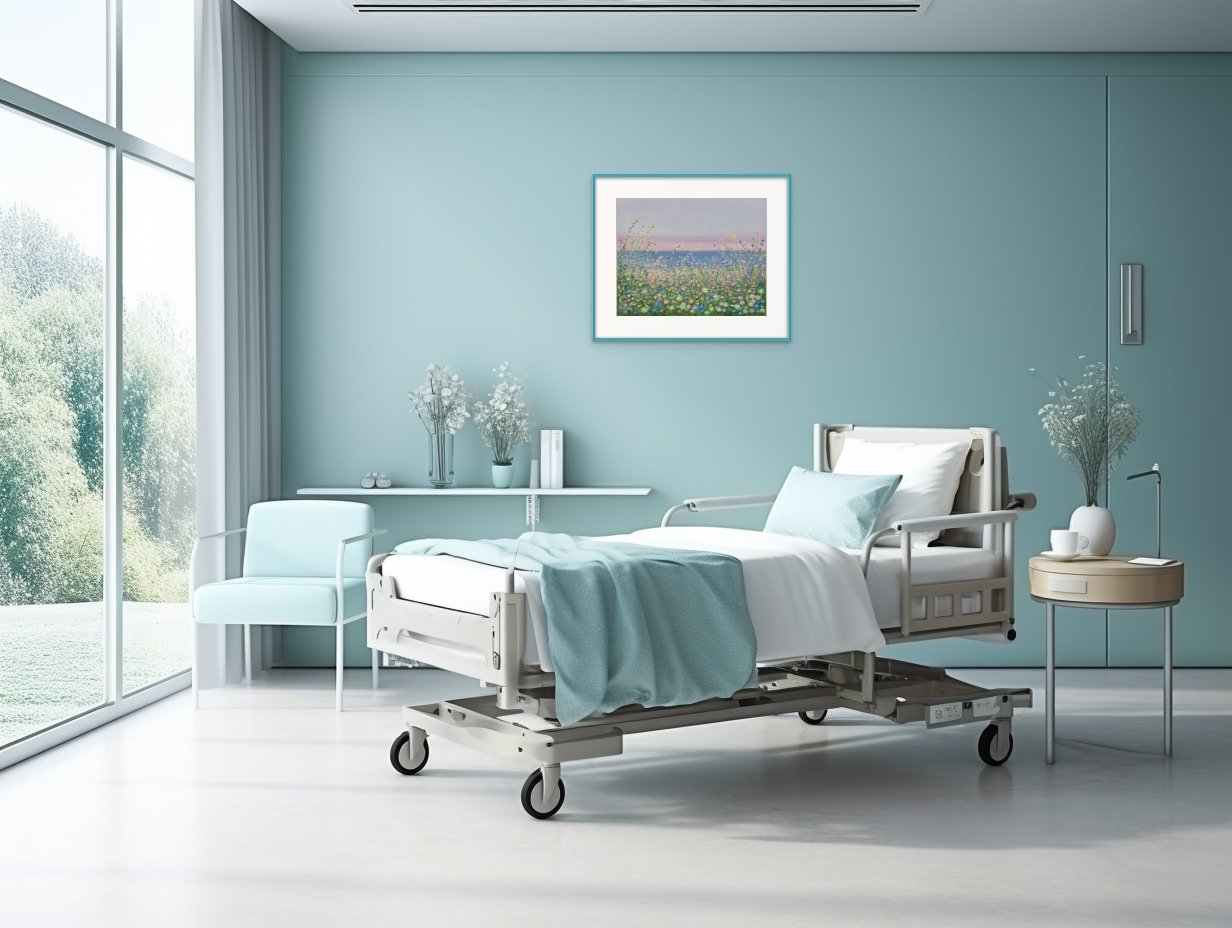
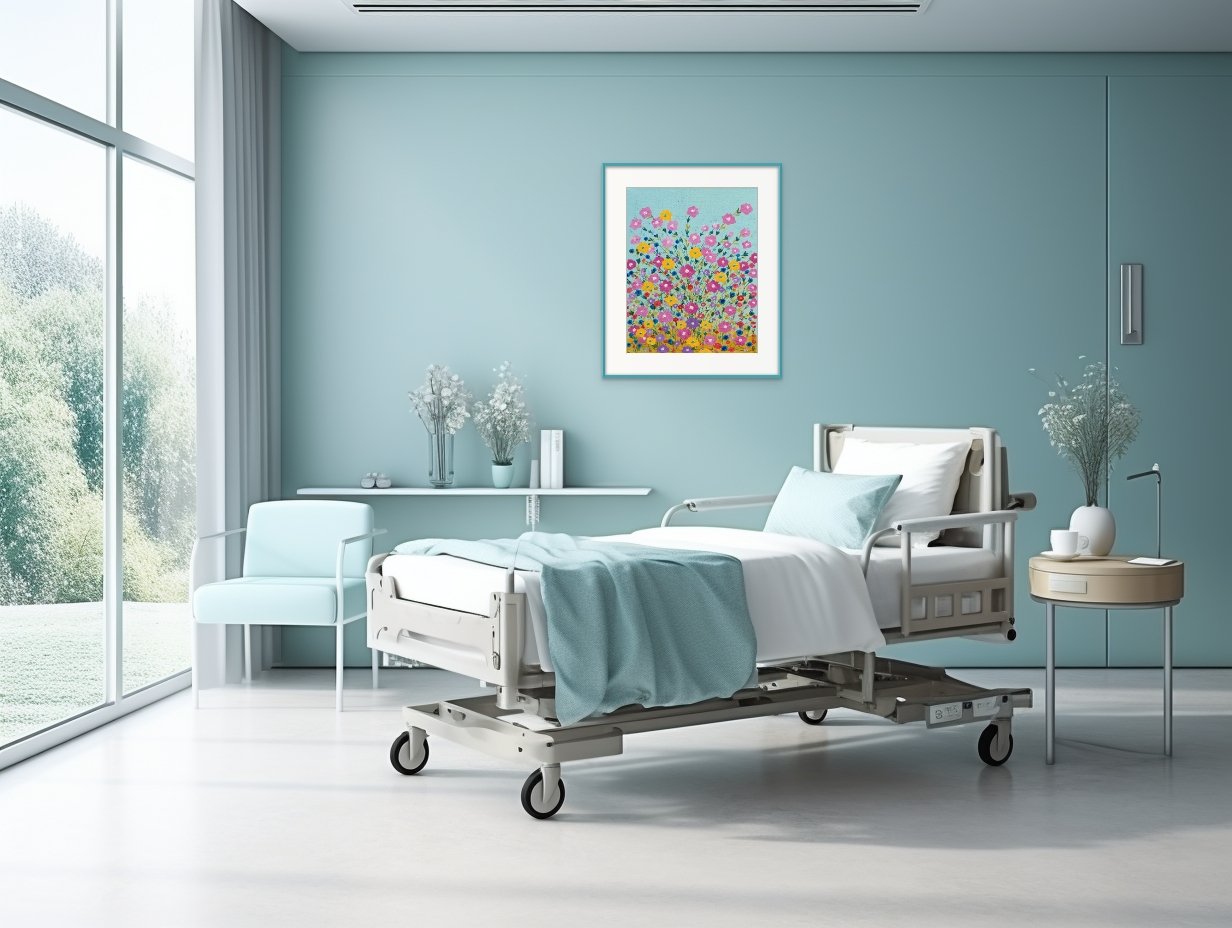
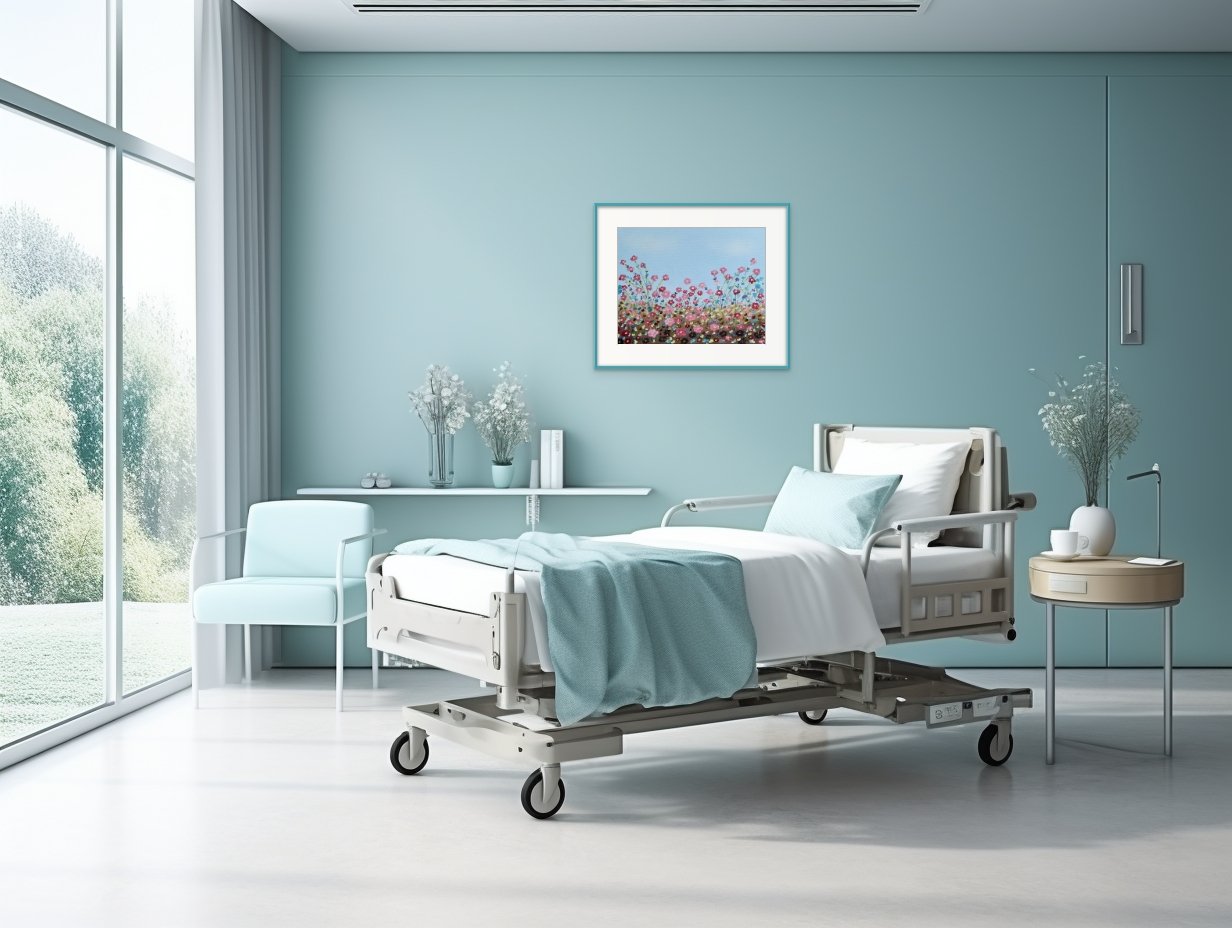
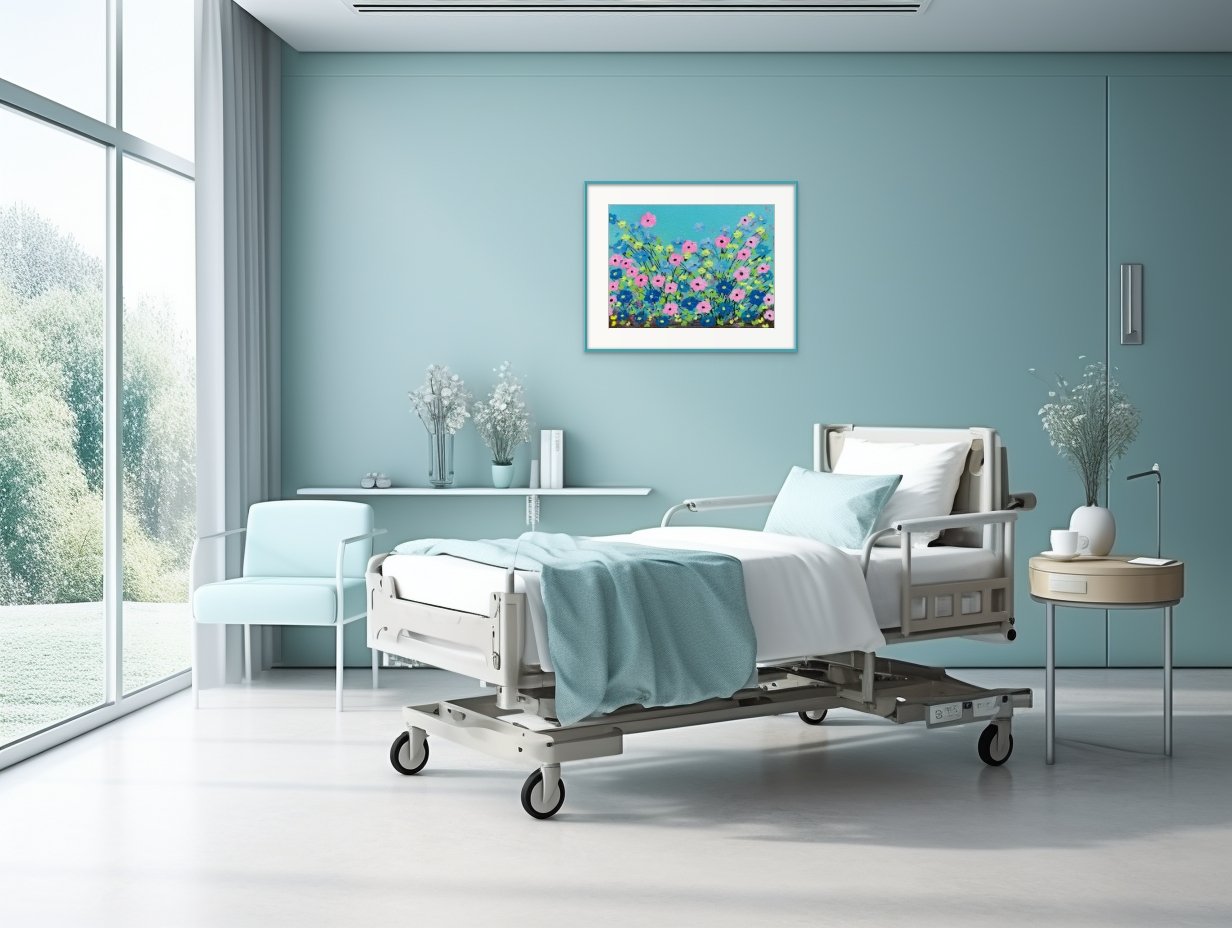
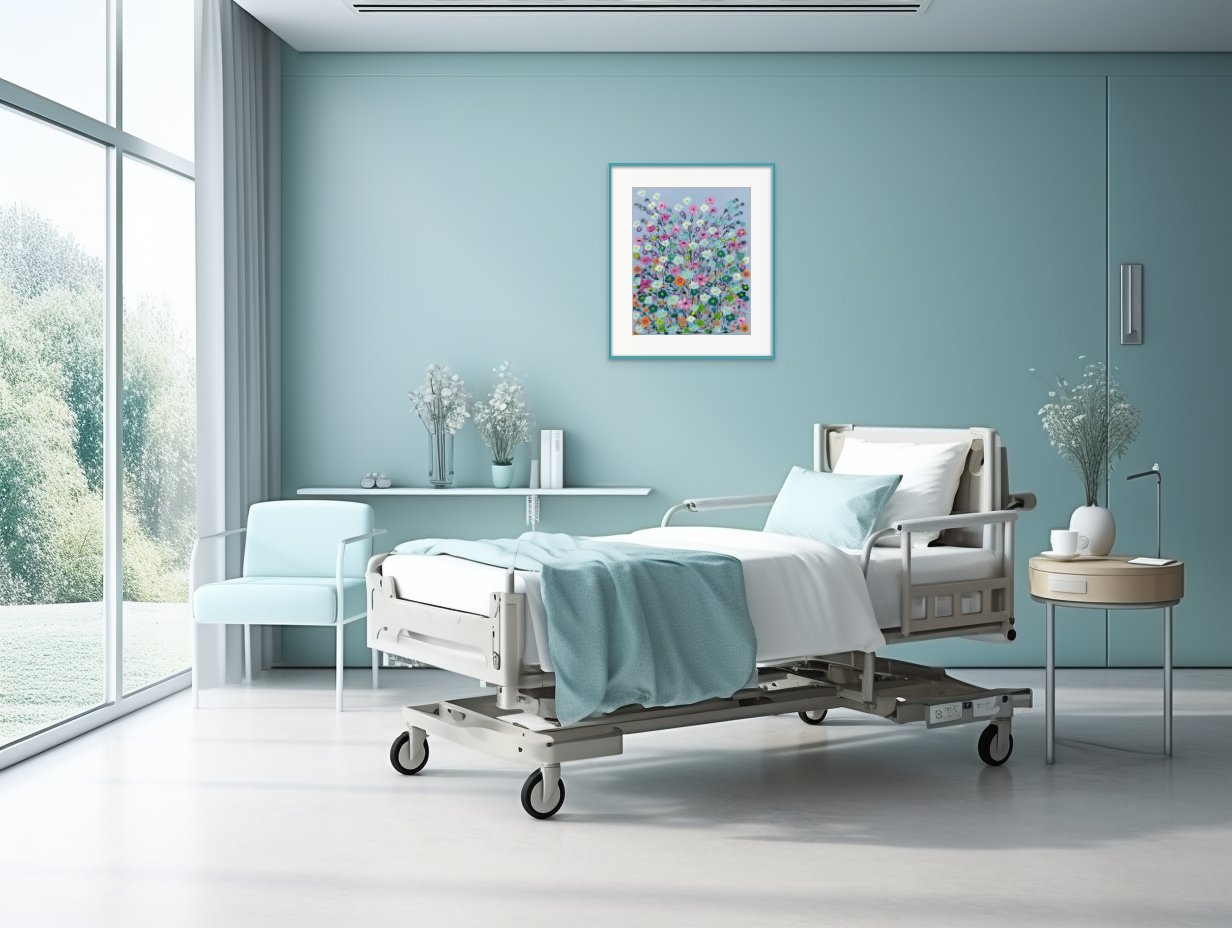
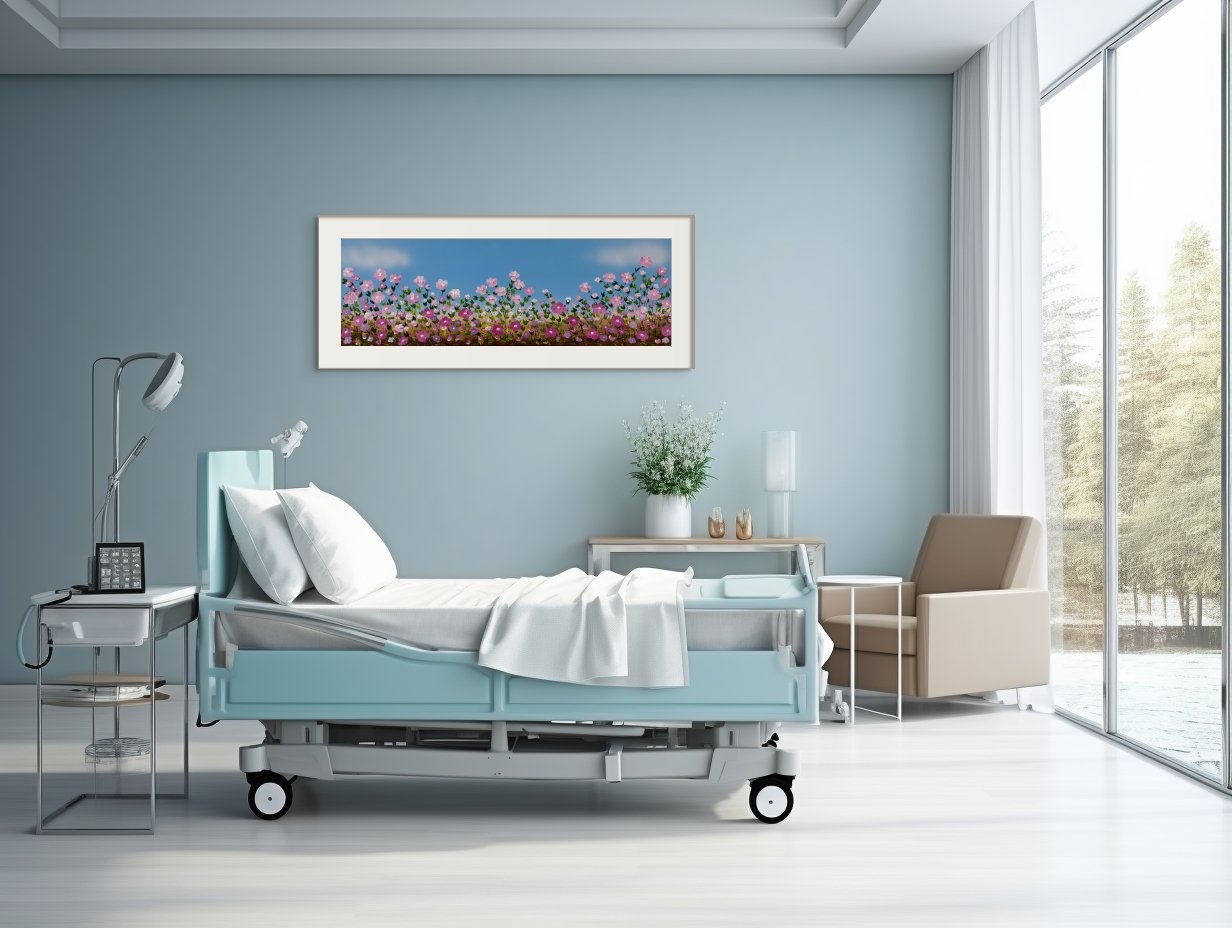
Did You Know This About Art And Health?
Did you know many evidence-based design paintings focus on the impact the art has on the brain?
Did you know many evidence-based design paintings focus on the impact the art has on the brain?
The focus of this painting is not the art. The purpose of this piece is to create an uplifting mood of peace and happiness.
Peace And Happiness by Dorothea Sandra, EDAC (60”x96”)
The painting above is an evidence-based design floral that incorporates information from many medical and scientific research studies on the brain, art, and health.
The question should be, “Does this painting make viewers feel uplifted and happy?”
What matters most is that the piece triggers the brain to create chemicals that actually produce happy feelings.
Today we have fabulous technology to study the brain and see how art impacts it. I was recently interviewed by the International + Mind Lab at the Center for Applied Neuroaesthetics, Pedersen Brain Science Institute at the Johns Hopkins University School of Medicine for my work creating evidence-based design art.
The principal investigator of the study I was in, Susan Magsamen, is a leader in this field and in her book, Your Brain on Art, How the Arts Transform Us, she writes: “New research, discoveries, and applications continue to mount. The sheer magnitude of this work is exceptional, and it promises to continue to accelerate. In the near future, as ever-more-sophisticated neuroaesthetic research becomes capable of measuring the effect of the arts on neural networks and those 600-plus mechanisms already identified, we will know more about how the arts affect us and how they can further benefit every aspect of our lives.” (p231)
During my interview with the Johns Hopkins School Of Medicine team, I emphasized that while I am creating evidence-based design paintings, my primary focus is not on creating beautiful art.
My focus while I am painting is to use established evidence-based design guidelines and principles to create art that impacts the brain so happy chemicals (like dopamine) are created.
With today’s evidence-based design art, the question isn’t, “Do you like this?” The question is, “How does this painting make you feel?”
Take A Peek Inside My New Book, 100 DAYS OF HAPPY HAPPY ART, EVIDENCE-BASED DESIGN.
Click the book cover to view.













